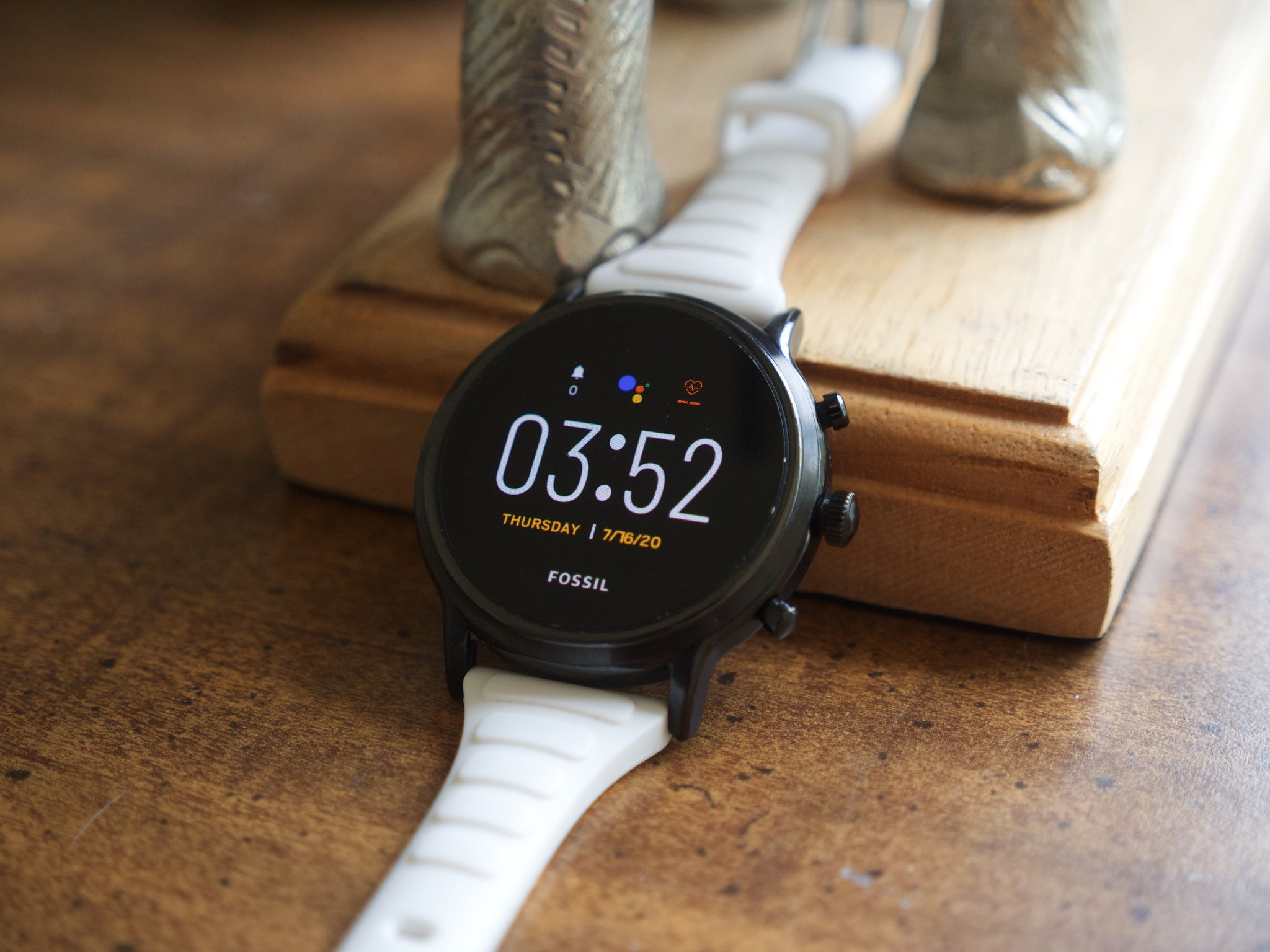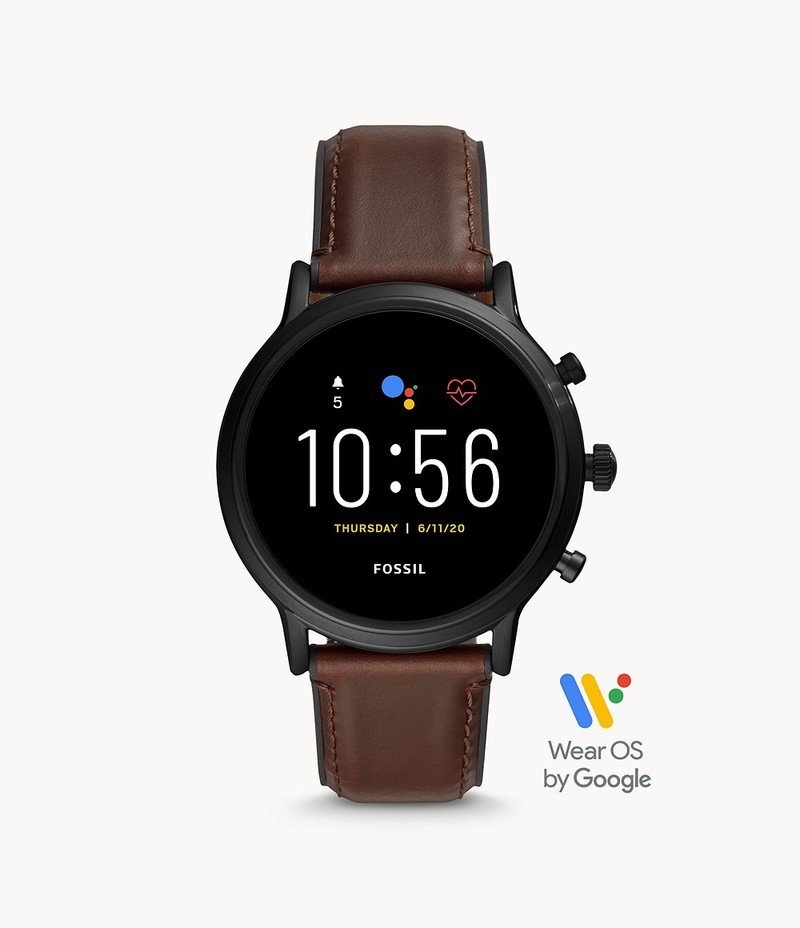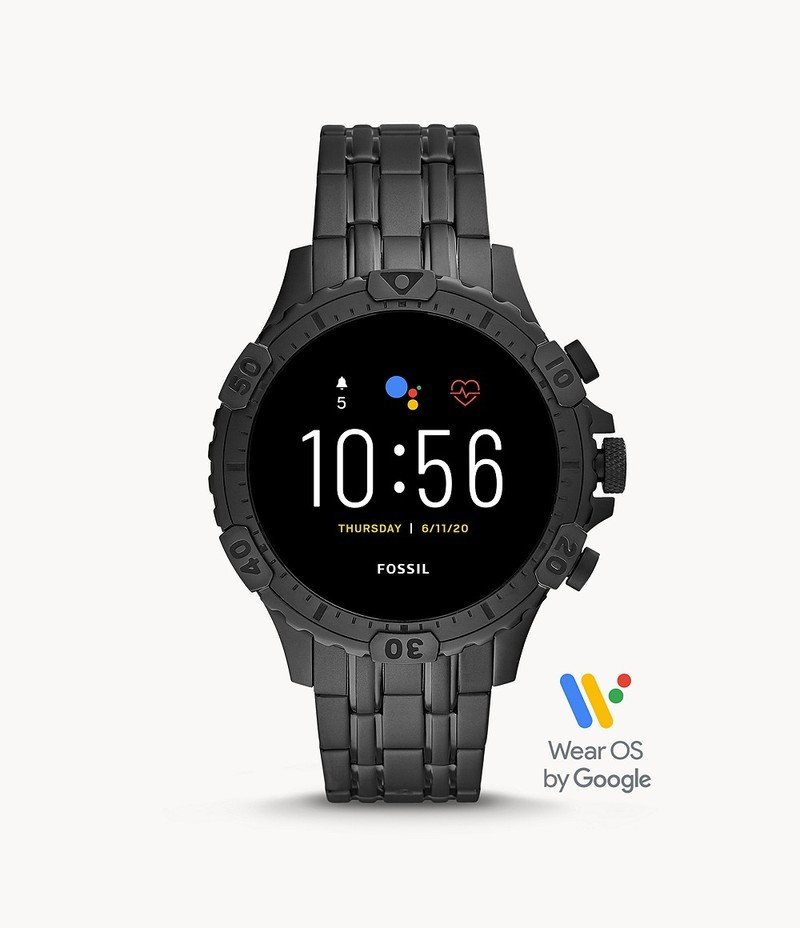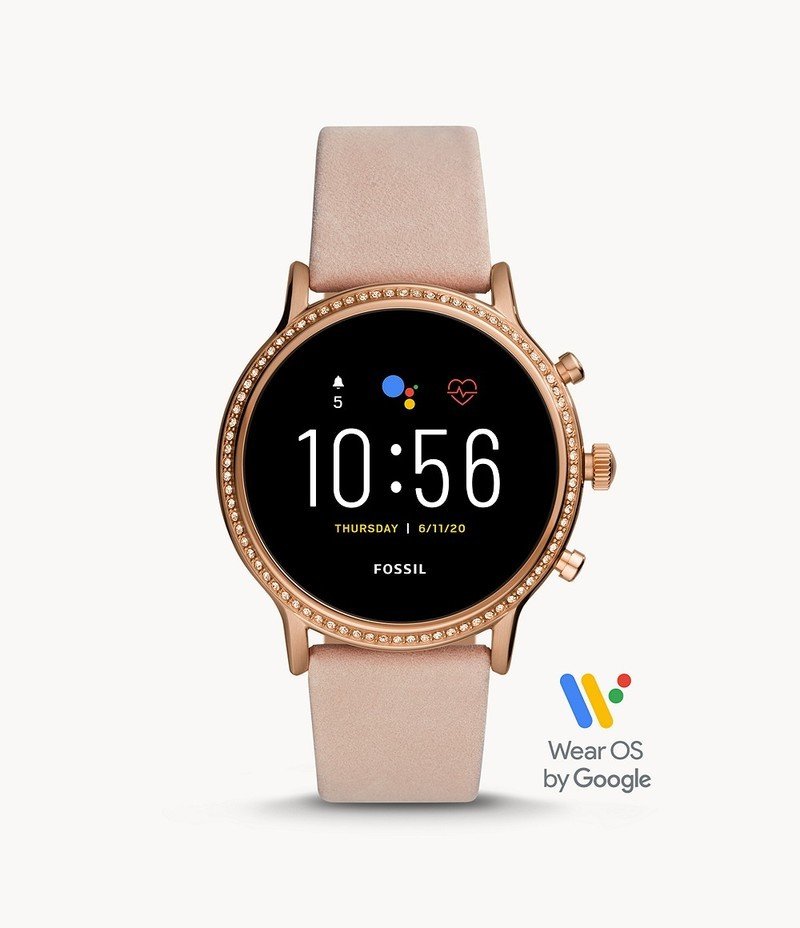Android Central Verdict
Bottom line: Wear OS is in an odd spot in mid-2020, but even so, the Fossil Gen 5 still manages to deliver on a lot of key areas. It's almost perfect from a hardware perspective, offering a comfortable design, good display, decent performance, and all of the smartwatch staples: NFC, GPS, a microphone, and an external speaker. Unfortunately, persistent quirks with Wear OS and outdated silicon bog down the watch to the point where it's a tough recommendation over its many competitors.
Pros
- +
Comfortable and well-built
- +
The external speaker is super convenient
- +
Built-in NFC and GPS
- +
Performance has held up well
Cons
- -
Lackluster battery life
- -
Dim screen brightness
- -
Connectivity issues
- -
Wear OS quirks
Why you can trust Android Central
Just under a year ago in August 2019, I reviewed the Fossil Gen 5 here on Android Central. In that review, I hailed it as being one of the very best Wear OS watches you could buy, and for the most part, that holds true even today in July 2020. That speaks to just how good Fossil made the Gen 5, but it also acts as a clear reminder that Wear OS as a platform hasn't really made any progress during that time.
What worked well on the Fossil Gen 5 still works well today, but its shortcomings are even more prevalent than before — with just about all of them being the fault of Wear OS and not necessarily anything Fossil did wrong. This is the case with virtually any Wear OS watch you find.
Big changes for Wear OS are coming soon, so with that in mind, here's a look back at one of its best poster boys from the past year.
Fossil Gen 5 What I still like

This re-review is being used to analyze both the Fossil Gen 5 and Wear OS as a whole, and as it would turn out, those two things fit perfectly into the way we usually structure our reviews on AC — things about a product we like and things about a product we don't like. Looking at the Fossil Gen 5, everything about the watch that I still enjoy has to do with its hardware.
Fossil is no stranger to the watch world, and that's evident with the Gen 5's design. Even a year after it was released, this is still a really great looking smartwatch. It's lightweight, extremely comfortable to wear, and it actually fits nicely on my tiny wrists (something I can't say about a lot of smartwatches). I also really like just how many variants of the Gen 5 Fossil has since come out with.
I have the "Carlyle" Gen 5, which is seen as the baseline model. If you aren't a fan of how it looks, though, you can get the Garrett or Julianna styles — the former having a much larger body while the Julianna is geared towards those that prefer a feminine aesthetic. Each of these three designs has its own distinct look, and I love that Fossil gives users the ability to choose which one suits them the best.
Source: Fossil
Get the latest news from Android Central, your trusted companion in the world of Android
Looking at some of the more functional design decisions, the Gen 5 has both a microphone and an external speaker. Virtually all Wear OS watches these days have a microphone, which allows you to talk to the Google Assistant and use your voice to respond to text messages. External speakers are still relatively rare, however, and this allows you to hear verbal responses from the Assistant and, more importantly, actually take phone calls directly on your wrist. The speaker still isn't very good and isn't something I'd want to listen to a conference call on, but for quick chats throughout the day, it's a nice convenience.
The Fossil Gen 5 still looks fantastic and has a healthy set of features.
If there are other smartwatch staples you're looking for, such as a heart-rate sensor, GPS, and NFC, they're all present on the Fossil Gen 5 and work as you'd expect. I wouldn't rely on the watch's heart-rate sensor or GPS if you're a serious runner or cyclist, but for casual use, they're both perfectly fine. The NFC chip also functions as intended, allowing you to quickly pay for things using just your wrist at stores that accept Google Pay.

In regards to its performance, this is one area that's pleasantly surprised me about the Fossil Gen 5. The watch is powered by a Qualcomm Snapdragon Wear 3100, which is a chipset that first debuted back in 2018 and has a processing component that hasn't really been upgraded since 2016. That's the norm for all Wear OS watches, but what made the Fossil Gen 5 interesting upon its release was its use of 1GB of RAM. That doesn't sound like a lot on paper, but it was a massive upgrade compared to the 512MB that most other watches were shipping with.
The Fossil Gen 5 is not a speed demon, but it's rather impressive how quickly it continues to move along — at least in some regards. Navigating through the user interface feels good, apps open fast enough, and it generally keeps up with most things I want to do. Given how outdated the heart of the watch is, that's pretty commendable.
These are all things I liked about the Fossil Gen 5 in my original review, and all of them have held up nicely to the test of time. Nothing about the Gen 5's hardware feels considerably outdated or out-of-place, but the story quickly changes as we dig a bit deeper.
Fossil Gen 5 What hasn't held up

That brings us to the second half of this review, which is focused on what hasn't held up well for the Fossil Gen 5 — in other words, Wear OS. There are a lot of issues the platform still currently faces, so let's just dive right in.
First off, there are the bugs/glitches. If you've ever tried setting up a Wear OS watch, you're all too familiar with how offputting the onboarding process can be. When re-pairing the Fossil Gen 5 to my Pixel 4 XL, my first attempt was met with an error that the watch and phone weren't connecting. I tried refreshing the Bluetooth search a few times, but it kept hitting me with that error message. The Wear OS app was mysteriously showing two Gen 5s that I could connect to, both with the same Bluetooth pairing code. When I tapped on the second one, it connected just fine. I eventually got everything working, but having a bug like that right out of the gate is far from a good user experience.
It just took 3 factory resets and 30 min to pair a Wear OS watch to my phone https://t.co/IfQ9L0ZzRt pic.twitter.com/wLCc9qgjgqIt just took 3 factory resets and 30 min to pair a Wear OS watch to my phone https://t.co/IfQ9L0ZzRt pic.twitter.com/wLCc9qgjgq— Andrew Martonik (@andrewmartonik) July 14, 2020July 14, 2020
This isn't an issue that's limited to just the Fossil Gen 5, either. My colleague Andrew is testing the Puma Smartwatch (which is made by Fossil Group) and had an even worse set up experience. As noted in his tweet above, he had to factory reset the watch three different times in order for it to connect to his phone (with the whole process taking 30 minutes). I've run into similar issues with other Wear OS watches I've tested, and every single time, it makes me loath the operating system just a little bit more.
Six years after version 1.0 debuted, Wear OS is still a buggy mess.
Other connectivity issues tend to plague a lot of Wear OS watches, such as Bluetooth disconnects and notifications randomly stopping for no good reason. Wearing a Wear OS watch requires a lot of maintenance, and given that the operating system is now well over six years old, things like this should not continue to happen.
We also need to address the current state of Wear OS silicon. As mentioned above, the Fossil Gen 5 uses the Snapdragon Wear 3100 chipset. This is the latest SoC that Qualcomm made for Wear OS, and it's now two years old. What's even more damning is that the 3100 didn't really upgrade the processing side of things, instead focusing on longer battery life. Not only did those battery improvements never come to fruition the way we were anticipating, but that means the Fossil Gen 5 has effectively the same performance that a Wear OS watch from 2016 did with the then-current Wear 2100 chip.

While I did mention above that the Fossil Gen 5 is fast enough for most tasks, that's not to say its performance is ideal. My Apple Watch Series 4 runs laps around what the Gen 5 can do, and as you start loading it up with lots of apps and endless notifications, it doesn't take too much for it to start chugging along at a slower pace.
A good example is trying to use the Google Assistant, which is kind of a nightmare. After tapping the microphone icon to get its attention, you're left waiting for the animation to change that indicates the watch is listening. However, by the time the animation loads, the Assistant thinks you're done talking and asks if you'd like to repeat something — requiring another tap of the microphone icon and repeating this process all over again.
This opens up a larger conversation about one of the biggest sticking points against all of Wear OS. Qualcomm's Snapdragon Wear 3100 chip, the thing that powers all modern Wear OS watches, isn't very good. It's slow, doesn't allow for very long battery life, and is built on an outdated 28nm infrastructure. It's effectively an instant handicap for any watch that uses it, and it's the best that Qualcomm currently has to offer.
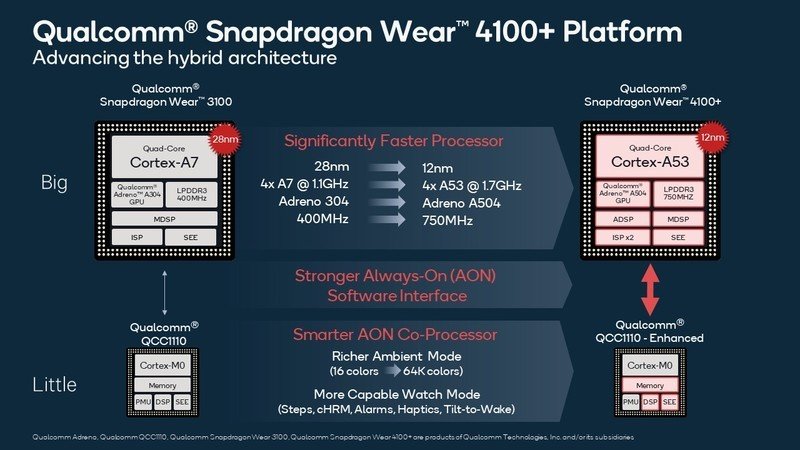
Thankfully, some light is at the end of the tunnel. Qualcomm unveiled its new Snapdragon Wear 4100+ platform in late-June, and it offers 85% faster performance along with 25% longer battery life. Those are considerable improvements that should make a real difference in day-to-day use, but it's still lagging behind what Apple and Samsung are doing with their wearable processing tech.
As Jerry noted in an editorial, "the Snapdragon 4100 is literally a generation behind the competition." The Wear 4100 will be better than the Wear 3100, but the bar was already pretty low to begin with.
Fossil Gen 5 Competition
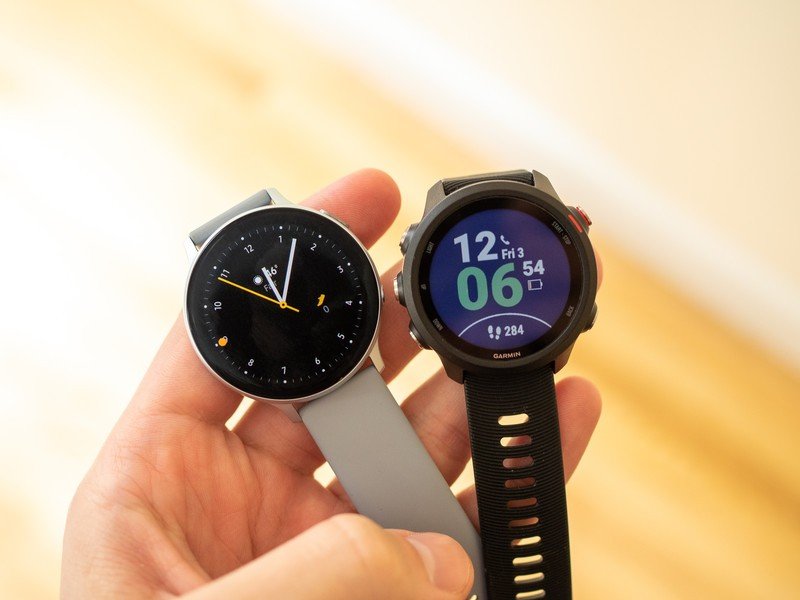
If you have an Android phone and are looking for a smartwatch to use alongside it, there are a lot of options available to you — the best of which is the Samsung Galaxy Watch Active 2. This is as close to perfect as you can get for an Android smartwatch in mid-2020, with almost every aspect of the Watch Active 2 being executed wonderfully. It has a sleek and comfortable design, gets up to three days of use on a single charge, has great fitness/health features, and has a powerful Tizen interface with snappy performance.
There's also the Fitbit Versa 2, which is an excellent choice if you're looking to up your physical activity. Fitbit's suite of health-tracking tools is one of the best on the market, with the Versa 2 offering all-day activity tracking, automatic workout detection, sleep tracking, and even an entire platform for female health. As you dig a bit deeper in the Fitbit companion app, you'll also find guided programs for cutting out sugar, getting in shape to run a 5K, and taking care of your mental health.
For people that are even more serious about getting fit, there are specialized sports-centric watches like the Garmin Forerunner 645. It's known for having extremely accurate GPS and heart-rate sensing tech, which usually take a backseat for more general-purpose watches like the Galaxy Watch Active 2.
Fossil Gen 5 Should you still buy it?

Who it's for
- If you really want a Wear OS watch and can't wait a few more months
- If you want a good-looking watch that's comfortable to wear
- If you want a smartwatch with an external speaker
Who it isn't for
- If you can wait a little longer for the upcoming Snapdragon Wear 4100 processor
- If you want a robust health/fitness tracking features
- If you need a watch that can last for more than one day per charge
Although I'd still consider the Fossil Gen 5 to be one of the best Wear OS watches that exists right now, that doesn't necessarily mean you should go out and buy it. The Gen 5's design and features have remained remarkably consistent over the past year, but the current state of Wear OS spoils the whole thing.
There are annoying software bugs that continue to persist, Qualcomm's first batch of watches with the Wear 4100 will be arriving at some point this year, and we're still waiting to see what Google is going to do with the operating system following its Fitbit acquisition.
3.5 out of 5
The Fossil Gen 5 proved that Wear OS watches didn't have to be completely terrible, but there was only so much Fossil could do with the cards made available to it. With a shiny new chipset and Google (hopefully) investing more into the Wear OS platform, a Fossil Gen 6 could be pretty interesting. I appreciate the Gen 5 for what it set out to do and how well it achieved that goal, but I think it's also fair to recognize that it's no longer a viable purchase in 2020.
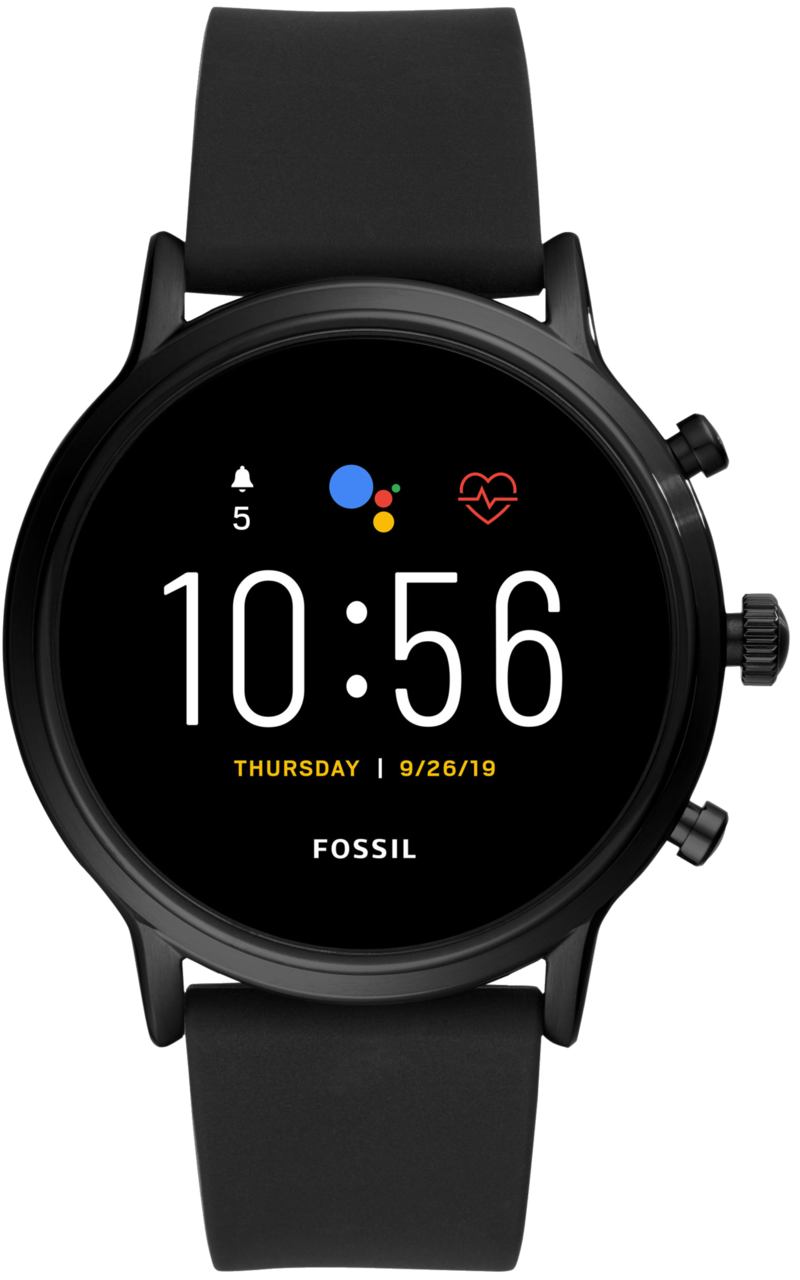
A great Wear OS watch is not a good smartwatch
Given the current state of Wear OS, the Fossil Gen 5 is one of the best options the platform currently has to offer. It has a great design, quality display, and all of the features you could ask for. Unfortunately, when you factor in Wear OS's various shortcomings and the upcoming release of a significantly better chipset from Qualcomm, buying the Fossil Gen 5 in 2020 just doesn't make a lot of sense.

Joe Maring was a Senior Editor for Android Central between 2017 and 2021. You can reach him on Twitter at @JoeMaring1.
